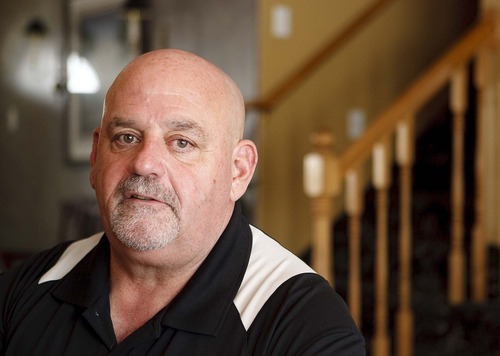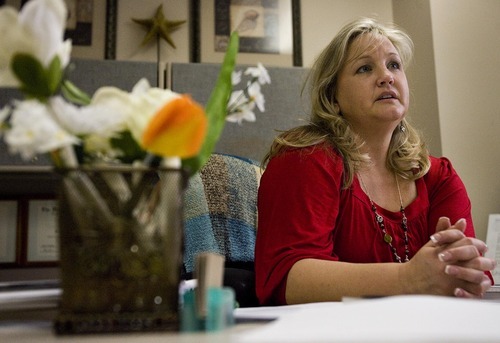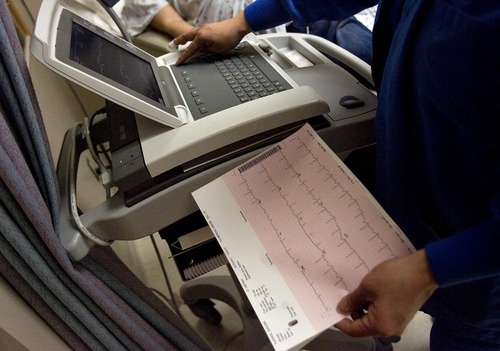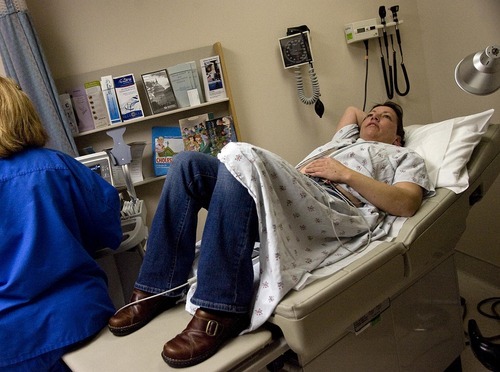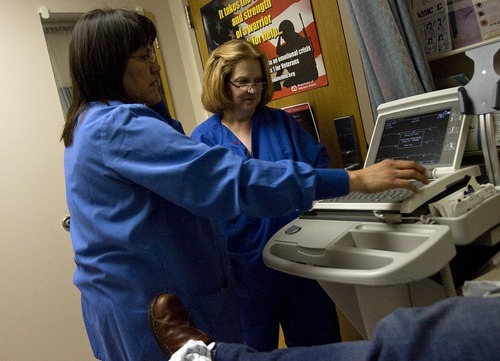This is an archived article that was published on sltrib.com in 2011, and information in the article may be outdated. It is provided only for personal research purposes and may not be reprinted.
June Perlman's military service ended in the mid-1950s. But she didn't arrive at the VA until the mid-1990s.
The former Eastern Airlines executive lost her medical benefits when the airline collapsed in 1991. Two years later, a friend told Perlman — who had served in the U.S. military's Women in the Air Force program during the Korean War — that she should look into getting her medical care through the Department of Veterans Affairs.
"I said, 'I can't. I'm not eligible,'" Perlman recalled. "And he took me by the hand and brought me to the VA."
Today, Perlman said, she gets "the best care in the whole wide world" at the VA. And she wants other female veterans to know that they can, too.
Women have served in the U.S. military since the Revolutionary War. But it wasn't until 1988 that the VA began offering medical and mental health services to female veterans. And Gina Painter, who manages a clinic dedicated to female veterans at the VA Medical Center in Salt Lake City, said the legacy of that exclusion is still being felt today.
"There's a lot of misinformation out there," she said. "A lot of people think we're only here for combat veterans. We get women all the time who say, 'I didn't serve in a combat role. I just drove a truck.' They don't see themselves as qualifying for VA services. Sometimes they don't think of themselves as veterans at all."
As the number of female veterans swells (women now make up about 15 percent of the U.S. Armed Forces), Painter and those she works with are trying to change the perception of the VA and what it offers. On Thursday, the Salt Lake women's clinic hosted an open house offering free cardiac health screening to all women who have served in the military to try to entice women to investigate the VA and its services.
One major obstacle: Veterans often believe the VA treats only patients for service-connected disabilities.
Although being injured while serving in the military is one of the most common ways veterans qualify for care, the VA doesn't limit its services to military-related health conditions.
In fact, Painter noted with conspicuous pride, one of the growing services her clinic offers is maternity care. "Seventy-five percent of our female patients are under 40 years old," she said. "Their health care needs are obviously going to be different," than more traditional patients — older males.
That means maternity care, gynecological services and breast cancer screening. And in a world in which VA officials estimate — conservatively, according to some studies — that one in five women veterans has been the victim of some form of sexual trauma, it means offering a wide range of psychological services geared specifically to women. "We're having to change the culture of the VA, a lot," Painter said.
The women's clinic serves about 1,800 women, up several hundred patients since Painter arrived in 2008.
"We're trying to be a one-stop shop," said the center's medical director, Adriana Rojas. "For us, it's about the totality of care."
Thus, Thursday's focus on preventing heart disease, which is not generally a service-connected ailment but is of great concern to the VA, because it kills more U.S. women than any other medical condition, Rojas said.
But before Rojas can treat women veterans, she has to get them in the door. And that means getting the word out that the VA is no longer a man's world.
That's still something of a work in progress. Thursday's open house drew a few dozen patients, but Painter said just a handful were new.
Another obstacle: The military hasn't done a particularly good job of transitioning its members from their roles as service members to their status as veterans.
Darlene Bledsoe could be Exhibit One for that systemic failure.
Bledsoe was an upper-enlisted career counselor in the Army when she left the service in 2005 so that she could spend more time with her children. In that role, she said, she should have been counseling other soldiers about their benefits and options as veterans. "But I didn't even know that I was eligible," she sighed. "That's clearly a problem."
Bledsoe had been out of the service for four years before a neighbor suggested that she investigate her eligibility for VA health care.
That neighbor was June Perlman. "She said, 'Darlene, you've got to get yourself enrolled,' and I said, 'I can't, I'm not eligible.' "
And with that, Bledsoe said, Perlman took her by the hand and led her to the VA.
Help for women veterans
The VA Salt Lake City Women's Clinic is on the first floor of Building 1 at the George E. Wahlem VA Medical Center, 500 Foothill Drive, Salt Lake City. To schedule an appointment, call 801-582-1565 ext. 5423


